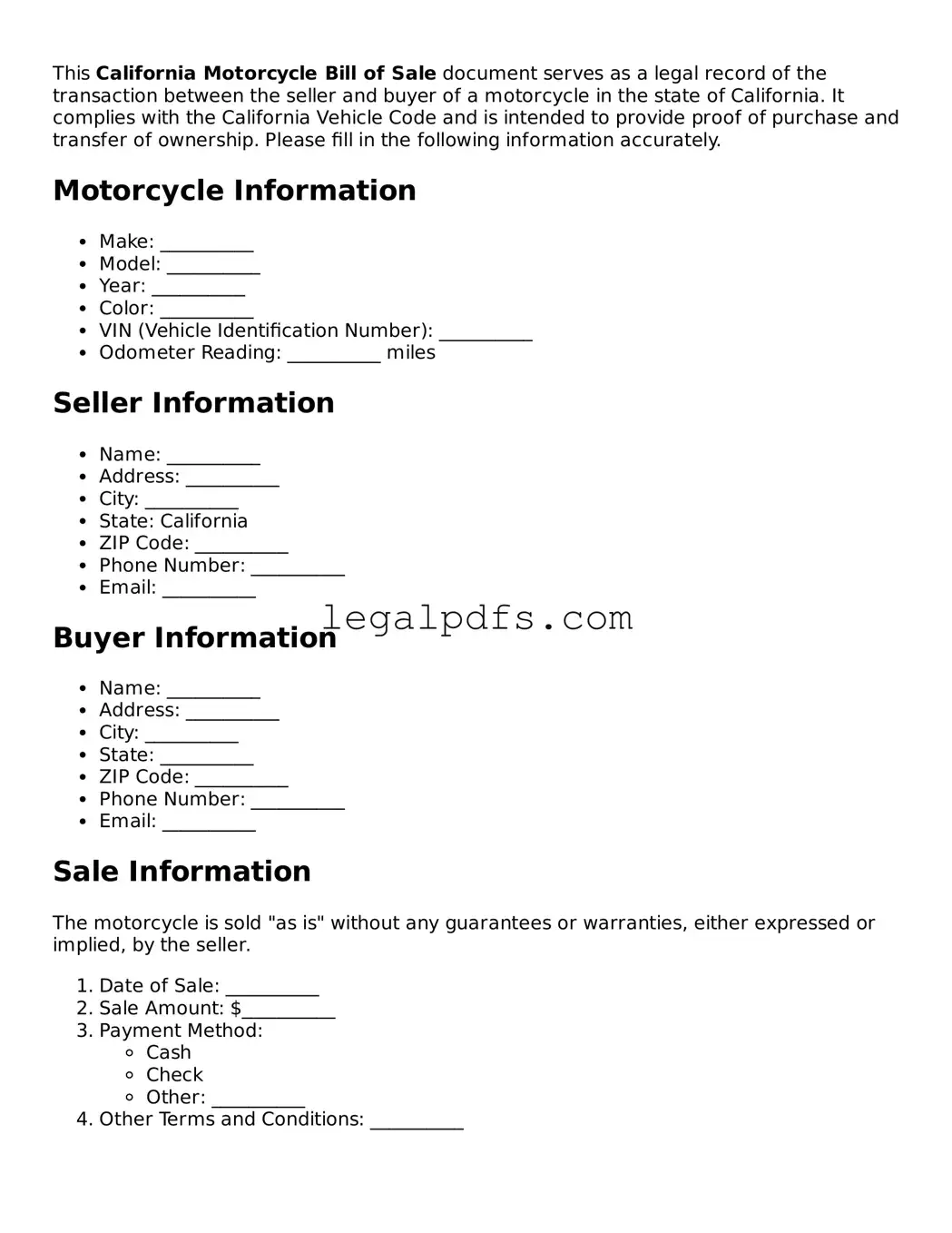What is a California Motorcycle Bill of Sale?
A California Motorcycle Bill of Sale is a legal document that records the sale and transfer of ownership of a motorcycle from the seller to the buyer. It includes essential details such as the motorcycle's make, model, year, VIN (Vehicle Identification Number), the sale date, and the agreed-upon price. This form serves as a crucial piece of evidence for the transaction, offering protection for both parties involved.
Is the California Motorcycle Bill of Sale required for the registration of the motorcycle?
Yes, in California, the Motorcycle Bill of Sale is typically required for the registration process of the motorcycle with the Department of Motor Vehicles (DMV). It verifies the change of ownership and is used along with other required documents such as the title transfer and odometer disclosure, if applicable. The buyer should present this form to the DMV as part of the registration process.
What information should be included in the Motorcycle Bill of Sale?
The Motorcycle Bill of Sale should contain the names and addresses of both the seller and the buyer, a detailed description of the motorcycle including its make, model, year, and VIN, the sale price, and the date of sale. Additionally, it often includes an acknowledgment of the sale's terms and conditions agreed upon by both parties and may also specify the motorcycle's condition at the time of sale. Signatures of both the buyer and seller are also a necessary requirement to affirm the agreement's validity.
Do both the buyer and the seller need to sign the California Motorcycle Bill of Sale?
Yes, for the California Motorcycle Bill of Sale to be recognized as a valid legal document, both the buyer and the seller must sign it. Their signatures confirm that both parties agree to the terms of the sale, including the transfer of ownership, the sales price, and the condition of the motorcycle. It's also beneficial for both parties to keep a copy of the signed document for their records.
